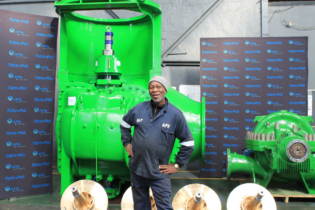The international building materials group Lafarge has announced that the merger of its South African and Nigerian assets has started rolling out an expansion strategy in sub-Saharan Africa that will add an additional 10 million tonnes of cement capacity a year in the region within the next four years.
Lafarge’s South African operations will be largely unaffected by the creation of Lafarge Africa, the new entity created by the merger. The new company is expected to have a production capacity of 12 million tonnes a year and last year had a combined revenue of about R13.5 billion. Charlene Lamb, the country communications manager for Lafarge South Africa, explained that the transaction will take place at Lafarge South Africa Holdings level and the operating companies Lafarge Industries, Lafarge Mining and Ash Resources, will be were unaffected. Senior management and employees in the country will also remain unaffected. Increasing capacity The merger of Lafarge’s assets has been interpreted by analysts as a response to Lafarge’s more aggressive rival, the Lagos-based Dangote, and to consolidate Lafarge’s positioning as a leading cement company. Lamb confirmed that Lafarge is planning additional capacity in sub-Saharan Africa in the next four years and a project to expand its production capacity by 5.5 million tonnes in Nigeria has begun. She said 8.5 million tonnes of this new capacity will come from largely brownfields projects in Nigeria, Tanzania and Zambia while a further 1.5 million tonnes will result from removing production bottlenecks in its operations throughout the region.Lafarge — which also plans to merge with Holcim of Switzerland to create the biggest cement producer in the world — has not disclosed how much it is investing in Nigeria or other countries on the continent.
Lafarge has a presence in Egypt, Algeria and Morocco in North Africa and in ten sub-Saharan countries, including Tanzania, Cameroon, Zimbabwe, Uganda, Benin, Kenya, Malawi and Zambia, as well as Nigeria and South Africa. Lamb said Lafarge was also positive about the long-term prospects for the cement industry in South Africa and looked forward to the roll-out of the government infrastructure expenditure programme. Increasing industry competition The South African cement industry is facing increased competition both because of new entrants to the market and existing producers increasing capacity. Sephaku Cement this year became the first new entrant since 1934 and invested about R3.3 billion in establishing two new plants that will have a total annual capacity of 2.2 million tonnes once they were fully operational. Jidong Development Group of China-backed Mamba Cement has commenced construction on a R1.8 billion greenfields pure cement plant with a capacity of more than 1 million tonnes a year at an established limestone deposit near Northam in Limpopo. PPC will over the next 18 months increase its cement capacity by a further 1 million tonnes a year through an upgrade to its slurry kiln 8 and is targeting to generate 40% of its revenue from outside South Africa by 2017.







